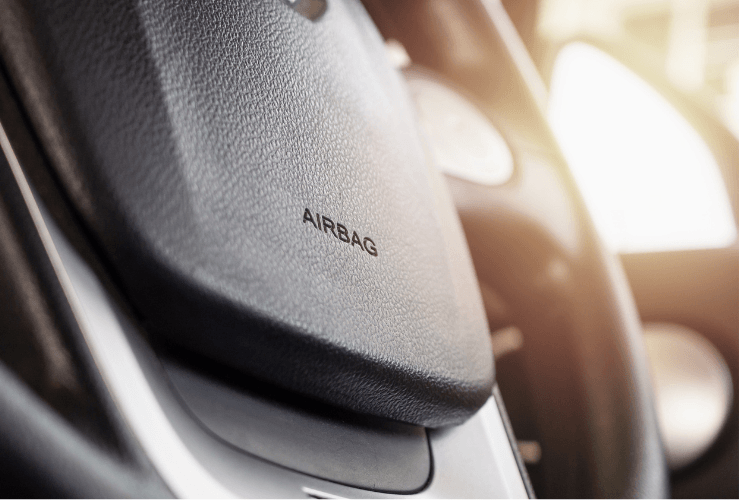Airbags - in unison with seatbelts - have prevented thousands of deaths and countless injuries over the years. Learn how they work in our guide.
An airbag is a safety system designed to prevent injury or death during a collision.
The airbag inflates rapidly - in a matter of milliseconds - cushioning a person's head and stopping it from striking the steering wheel, dashboard, or other part of a car's interior.

How does the system work?
Modern vehicles fitted with airbags have sensors that can detect if a collision has occurred. A chemical reaction takes place that inflates the airbag in around 30 milliseconds. It then deflates rapidly via holes in the rear of the airbag.
The cushioning effect only lasts around 100 milliseconds, but it is enough to prevent serious injury. However, a person can suffer minor burns due to the chemical reaction. This is due to the release of chemicals such as sodium azide.
How effective are airbags at preventing injury or death?
According to the United States' National Highway Traffic Safety Administration, airbags have saved around 50,000 lives over a 30-year period.

Where are airbags installed?
When airbags were first developed in the 1950s, they were installed in the steering wheel, thereby only protecting the driver. But in modern cars, airbags are often installed in various locations - including the steering wheel, the passenger-side part of the dashboard, and in the backs of front seats to protect rear passengers.
Do all cars have airbags?
The vast majority of modern cars have airbags fitted in the factory.
For example, the Ford Puma - one of the UK's most popular cars - has six airbags as standard: dual frontal, side chest-protecting, and side head-protecting (curtain) airbags. These various airbag types prospect against both front and side impacts.
Even budget cars like the Dacia Sandero have airbags as standard; the Stepway variant also boasts six in total.
If you're unsure whether your car has airbags fitted, look for the "SRS AIRBAG" on the steering wheel. SRS stands for 'supplemental restraint system'.

Why must seat belts be worn for airbags to work?
Airbags can only be deployed safely if the person is wearing a seatbelt. The modern pretensioner seat belt stops the upper body from striking the steering wheel or dashboard, but it does not protect the head. The airbag prevents the head from striking hard areas of the car.
If the seatbelt is not being worn, the body and head will move forward too quickly, striking the airbags at full force - which can itself lead to injury.
The restraining action of the seat belt means the head will be cushioned at the right instant and in a safe manner.
Under UK law, seatbelts must be worn if they are fitted (with a handful of exceptions).
You can be fined up to £500 for not wearing a fitted seat belt.
Can airbags be deactivated?
In most modern cars, the airbag system can be deactivated - but this should only be done when travelling with a rear-facing child seat.
If using a front-facing child seat, the airbag MUST NOT be deactivated.
Can airbags go off by mistake?
Airbags are designed to be deployed when the car sensors detect a collision - by way of monitoring speed, braking, and impact. However, if the sensors are malfunctioning, it's possible for an airbag to go off when there hasn't been a crash.
And the chances of random airbag deployment are extremely low - but if it does happen, it can potentially cause injury or even death.

How do I know if my airbag system has a fault?
If you see the airbag warning light come on, a fault has been detected. You should take your vehicle to a trained mechanic who will be able to retrieve the error code from the car's computer and then organise a repair. Some garages can even come to your location with a view to diagnosing and fixing the issue on-site.
Note that your airbag warning light may come on for a second or two when you start up your car, but should then go off. If it remains on, have it looked at promptly.
How long will my airbag system last?
In the past, it was recommended that airbags be checked every 10 years. But in modern cars, airbags should last for the lifetime of the vehicle - assuming they do not malfunction or sustain any damage.
Airbags and recalls
In 2014, millions of cars fitted with Takata airbags were recalled due to faults in the manufacturing process. The recall affected manufacturers across the United States, Europe, and Asia and led to the demise of Takata.
Airbags replacement and maintenance
If you see the airbag warning light appear and remain lit, or if your manufacturer tells you there is an issue with your model's airbags, it is imperative you take appropriate action. Your car's airbag system could save your life, or those of your passengers.




